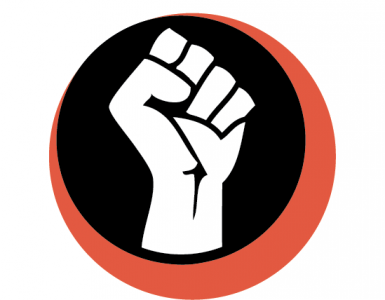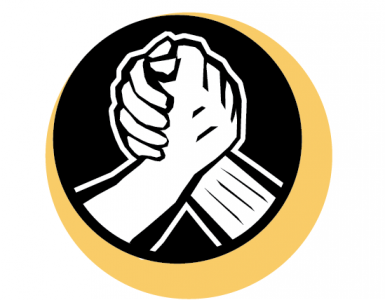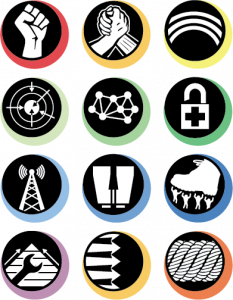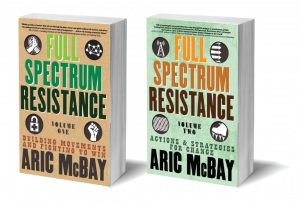How do groups form and organize themselves to be as effective as possible?
In a nutshell: There is no one right way to organize, but a group’s structure must match their strategy; the most effective movements aren’t militant or well-organized, but are militant and organized.
| In this chapter: | |
| Stonewall – The modern movement for LGBTQ+ rights is launched by a riot in 1969. (p. 187) | |
| Institutionalizing the Riot – Militancy and disruption are critical, but victories won through direct action can be ephemeral if not cemented in enduring organizations or institutions. As state power becomes more concentrated and technological, the need for organized resistance grows. (p. 190) | |
| The Tyranny of Structurelessness – Groups which have “no structure” develop dysfunctional and hidden power dynamics. (p. 194) | |
| Organizational Tensions – Different kinds of groups must balance conflicting organizational tensions; historical examples tell us what factors will make different kinds of groups succeed. (p. 197)
1. Small vs. Big (practical, p. 201)
2. Decentralized vs. Centralized (p. 205) 3. Informal vs. Formal (checklist, p. 211) 4. Consensus vs. Hierarchy (practical, p. 221) 5. Open vs. Clandestine (p. 226) 6. Moderate vs. Militant (p. 230) 7. Anything Goes vs. Code of Conduct (checklist, p. 233) Other organizational factors (p. 233) |
|
| Organizational Snapshots – Complementary but different groups can form complete, cohesive movements, using the full spectrum of resistance. (p. 235) | |
| ACT UP – The tradition of combined militancy and organization was central in combating the HIV/AIDS epidemic in the 1980s. (p. 224) | |
Movements and groups in this chapter:
Featured: Stonewall, ACT UP. Discussed: Homophile movement, Mattachine Society, Daughters of Bilitis, Gay Liberation Front, Cooper’s Donuts Riot (1959), Compton’s Cafeteria Riot (1966), Early Feminist Consciousness-Raising Groups, Anti-Globalization Movement, Industrial Workers of the World (Wobblies), Deacons for Defense, Sandinistas, Special Operations Executive / Resistance in Nazi-Occupied Europe, Pirates (in the Age of Sail), Spanish Civil War Militias, Vietnamese Anti-Colonial Resistance, Landless Rural Workers’ Movement (Brazil), Native Youth Movement Warriors Society, Black Panther Party. Mentioned: Numerous others.






